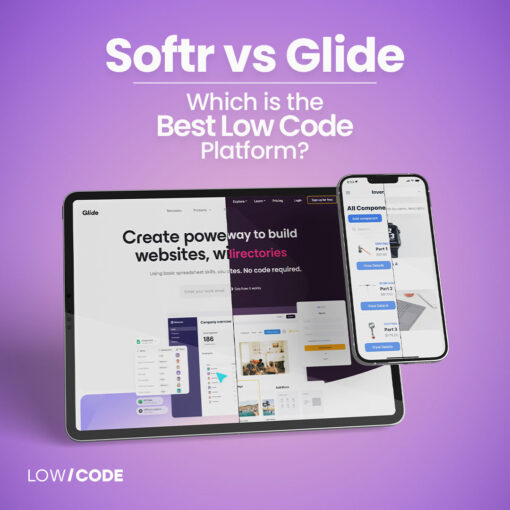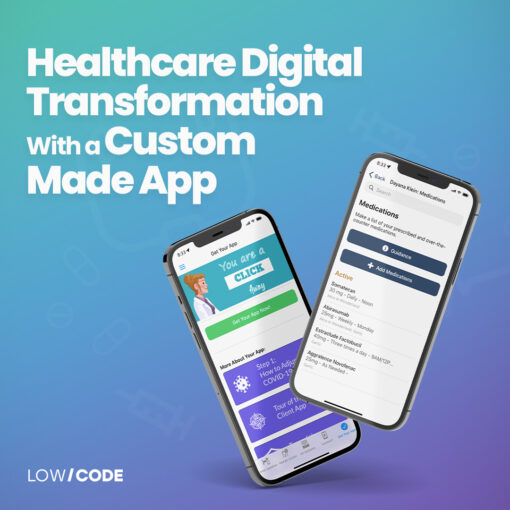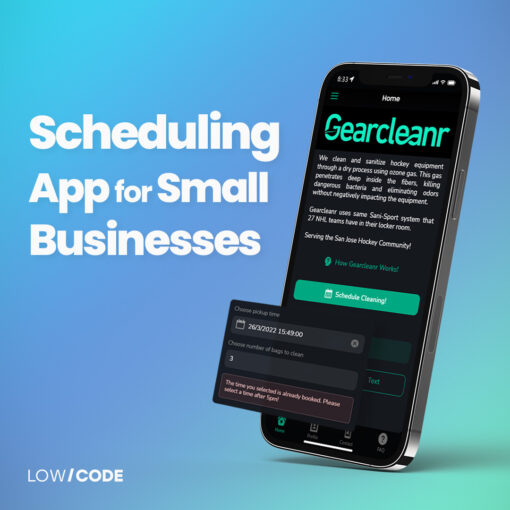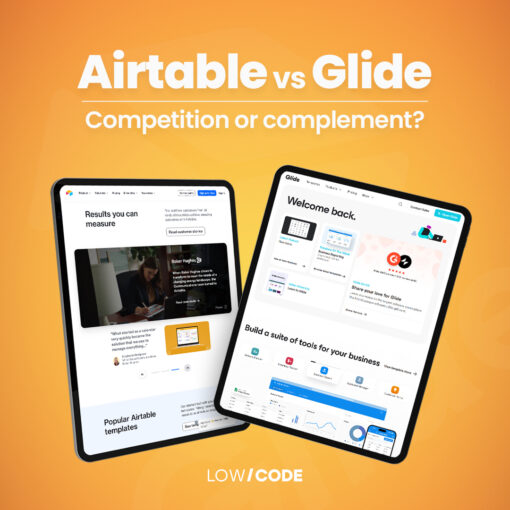It depends on the use case
While no-code automation is without a doubt the future of business applications, no- and low-code app development is applicable to projects with a limited scope in 2021.
The no-code movement is fueled by the ambition to enable a future where people with zero technical skills can create and benefit from their own web or mobile applications.
This would mean a level-playing field for all of us, allowing “normal” people to optimize the operations of their business without being forced to learn how to program.
» TRY NOW: Estimate How Much Your Dream App Would Cost with a Simple Calculator
The value of this is immense:
- Creating apps from scratch without learning how to program
- Automating tasks without touching a line of code
- Making apps with a drag-and-drop interface
… and so much more.
These changes are already happening, and they’re driving value for tens of thousands of businesses around the world who are forced to adapt but don’t have the technical skills.
Yet the question remains:
“Is no code’s future viable? And if so, what lies ahead of us?”
With a bit of history plus a mix of data trends, practical examples, and success stories, here’s all you need to know about the future of no-code and what to expect beyond 2022.
The History of No-Code Development
While the term “no-code” peaked in popularity in July 2020, its history dates all the way back to the first graphical software that allowed for data manipulation—Excel.
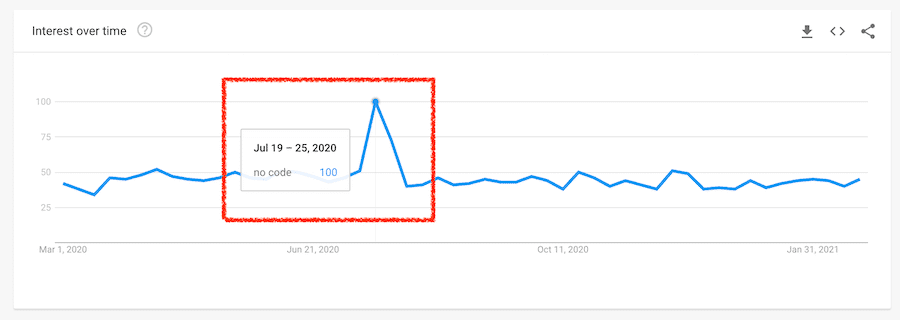
Today, people will often associate Excel to old software that is outdated and that nobody wants to use anymore, but the reality is that Microsoft was ahead of everyone else.
When first launched in 1985, the software could do a variety of things:
- Data manipulation and analysis
- Use of formulas to automate calculations
- Visualizations for a better understanding of data
These concepts remain extremely popular and are still being used for business-critical organizations, making Excel one of the most revolutionary business tools of its time.

The spreadsheet software was the first application of visual programming that ever existed, but for it to become what we refer to as “no-code” today, it was missing two things:
- A database-like data retrieval system, and;
- A front-end interface component.
While Excel was never meant to do these things as it was (and still is) primarily targeted at business users who are fine with looking at ugly UIs, things have changed since then.
It’s Google Sheets that—21 years later—first popularized the idea of hosting your data on the cloud instead of porting your data manually or through complex clusters of internal servers.
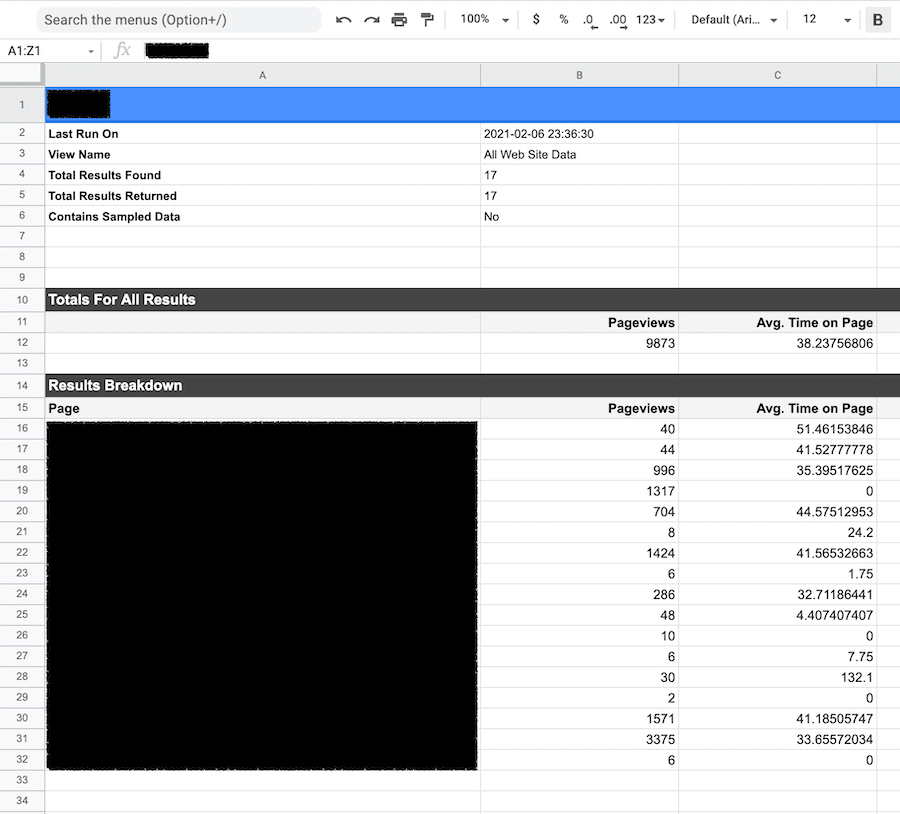
Always available and retrievable.
That’s what truly kicked off the no-code movement…
How The Internet Enabled No-Code Development
Post-2006, everyone was jumping into the “cloud”: this new way of doing everything from tracking personal information across devices to porting business data quickly.
Services like Dropbox and Evernote came out of nowhere to completely disrupt the way things were done up to that point, giving the world a taste of what the internet was capable of.
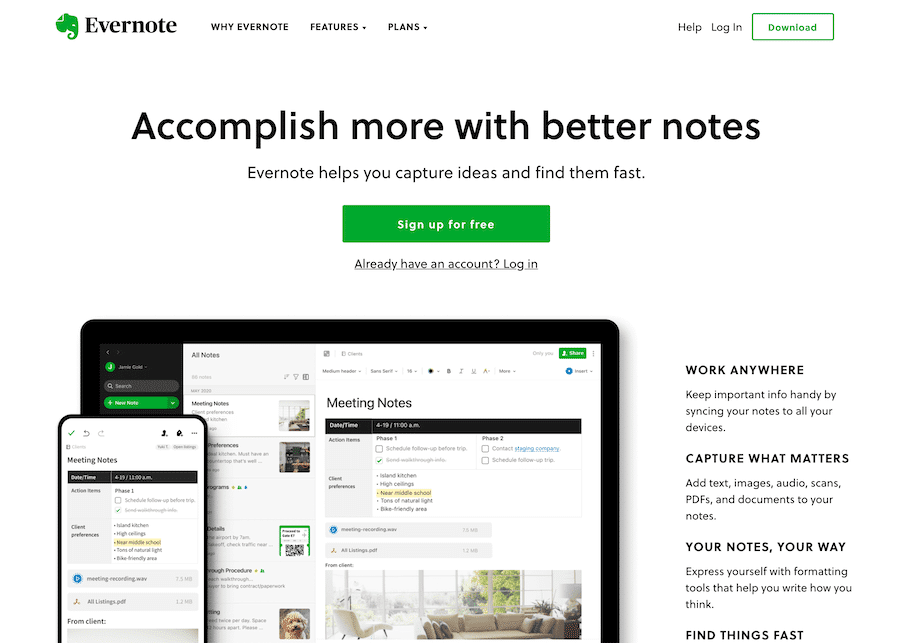
With that came a big problem though.
All these new tools, they were super useful…
But they didn’t communicate with one another!
This led to business users having to wrangle data between one service to another and, ultimately, lose a ton of time and resources in the process.
But in 2011, early versions of tools like Zapier and Integromat started popping up, promising a world where you wouldn’t have to worry about manual data processing anymore.
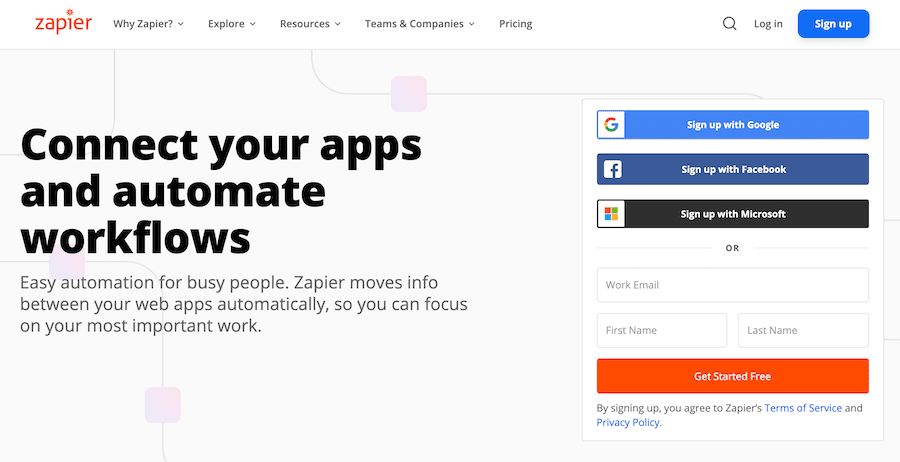
That promise is still part of these tools’ philosophy today, and it enables a world of possibilities for no-code to blossom into the rich community it has now become.
The Rise of No-Code Automation Tools
The real value of coding is automation, so without Zapier or Integromat acting as the glue holding the pieces together, there wasn’t much value in no-code at all.
That quickly changed when app developers started realizing this was crucial for the growth of their businesses, making integrations for tools like Zapier almost a given.

In 2021, you can’t possibly find an app that doesn’t have Zapier integration, and for good reason. With just one central account, you can manage thousands of automation.
Plus, the subscription pays for itself…
The more you automate, the less time you spend on work.
But the rise of no-code automation tools doesn’t include just Zapier and its competitors; it’s also a key target for juggernauts like Microsoft and, more recently, Airtable.

The world is clearly going in the direction of easily-built, centralized automation that can save you time bit by bit as you identify bottlenecks and repetitive tasks in your day-to-day life.
Why?
Because it’s convenient.
With technology becoming a part of everyone’s life, you can’t possibly avoid the fact that business isn’t what it used to be, and that it’s getting harder to stand out:
- Big companies are more efficient than ever
- Corporations invest heavily in custom development
- Technology firms are getting richer and richer by the day
As a small business looking to make a dent, how are you supposed to compete when all you have at your disposal are a couple bucks and some goodwill?
The answer is in no-code.
The Facts Behind No-Code Development in 2021
When you have so many people choosing to employ a new way of doing things, you also have new business opportunities to leverage, as well as ways to improve your own processes.
Here is some hard data about where no-code stands both as a practice among enthusiasts and business owners, and as a potential opportunity for people to generate additional revenue:
Fact #1: No-Code Development Is Growing at a Breakneck Speed
When you look at the numbers, predictions from Forrester state that low-code/no-code development is poised to grow from $3.8B in 2017 to a whopping $21.2B in 2022.

That is insane growth for a market that’s relatively “young,” and it’s well-reflected in Zapier’s immense $4B+ valuation after a share deal with investing firm Sequoia Capital.
(Although the number is highly inflated compared to Zapier’s revenue)
With this growth outlook, you can rest assured that no-code is here to stay, with companies like Amazon investing heavily in the scene as well as other tech giants.
Fact #2: Big Tech Is Investing Heavily in No-Code
Picking up from fact #1, big tech companies aren’t blind to the trend, and they’re working towards leveraging it in full. Some examples of these are:
- Amazon’s Honeycode app builder
- Google’s AppSheet app builder
- Microsoft’s Power Apps
… the list goes on.
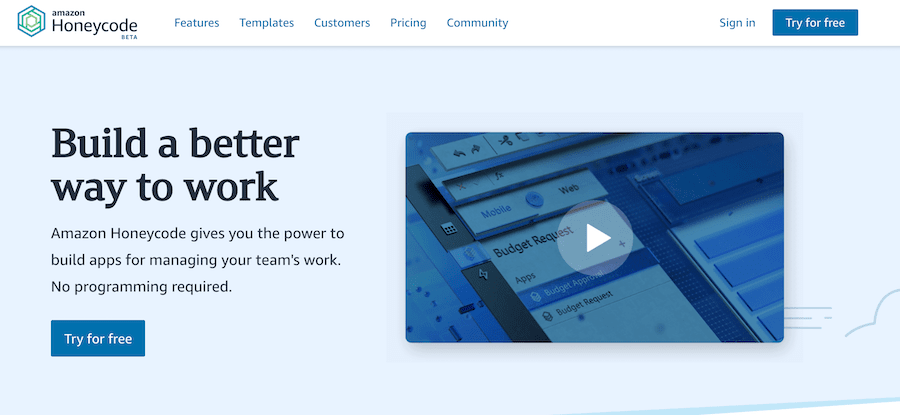
This doesn’t make learning any of these platforms “easier” than developing from scratch as the learning curve is steep. However, productivity is much higher during implementation.
If all the big guys are investing in the scene, you know that it’s a trend worth looking into, especially if you’re just getting started with building internal apps for your business.
Fact #3: No-Code Costs Less Than Traditional Development
This can be demonstrated time and time again… No-code is much more cost-effective than traditional development, and you don’t have to worry about scalability issues.
At LowCode Agency no code agency we’ve built dozens of fully-functioning apps for our customers and we were able to help them save tens of thousands of $ using Glide no code app builder instead of custom code.
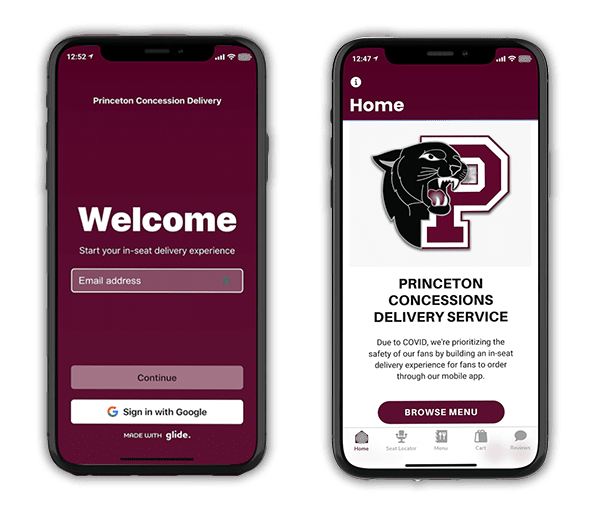
The cost of an app depends on a number of factors:
- Size of your app
- Type of UI elements
- Account functionality
- User-generated content
… and more.
In general, apps built with no-code development platforms cost 10x less than apps built with custom code, making them the only viable solution for some small businesses.
To learn more, check out our guide to web app development costs.
Fact #4: No-Code Development Benefits Small Businesses Most
Because of its huge savings against traditional practices, no-code development is perfect for small businesses looking to get their feet wet with increased operational efficiency.
While no-code apps are built for a variety of reasons, most businesses want to use them as internal applications for their employees to connect with one another.
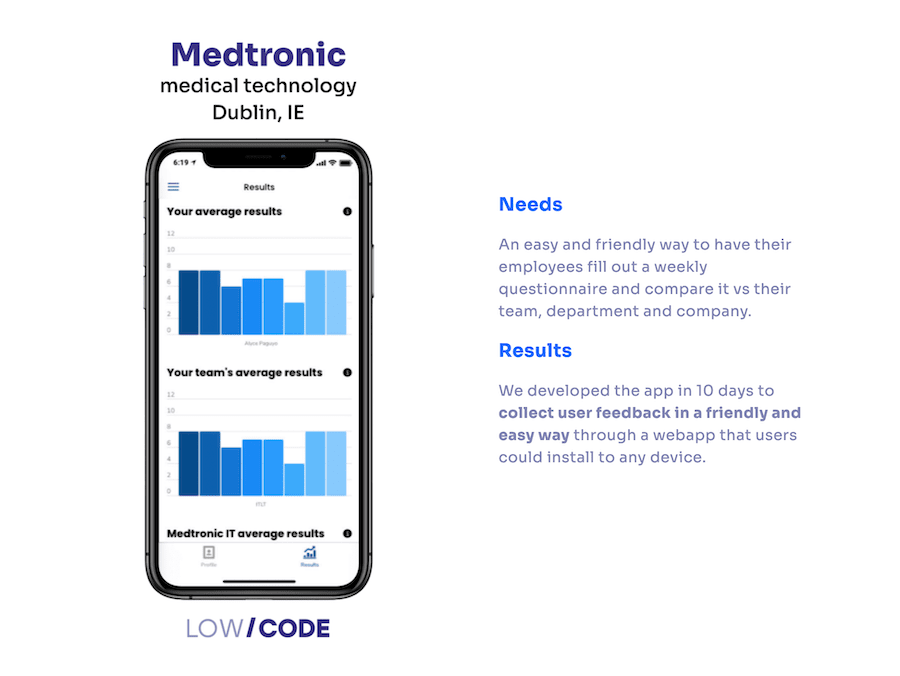
This increases internal collaboration while decreasing dark areas with communication, making the experience of using an app a more effective way to work together.
Check out some examples of apps that were built entirely with no-code either as a direct-to-consumer product or as a way to improve business processes.
These four data-backed facts alone are a powerful testament to no-code’s impact on both the business world as well as the development/creator community at large.
Is No-Code The Future of Development?

The answer to this question lies in the use case. If you’re a business owner who needs to streamline operations without spending a fortune, no-code development is the future for you.
If you’re a skilled developer using frameworks and other tools to speed up development time, no-code won’t do much to help you get more value from your existing workflow.
However, that goes beyond the scope of no-code development which is meant to help non-technical people get things done more efficiently (and effectively).
For this, check out how much it would cost you to create your own app from scratch using no-code compared to traditional development. You’ll be surprised by the gap in pricing.
Originally published Mar 1 2021
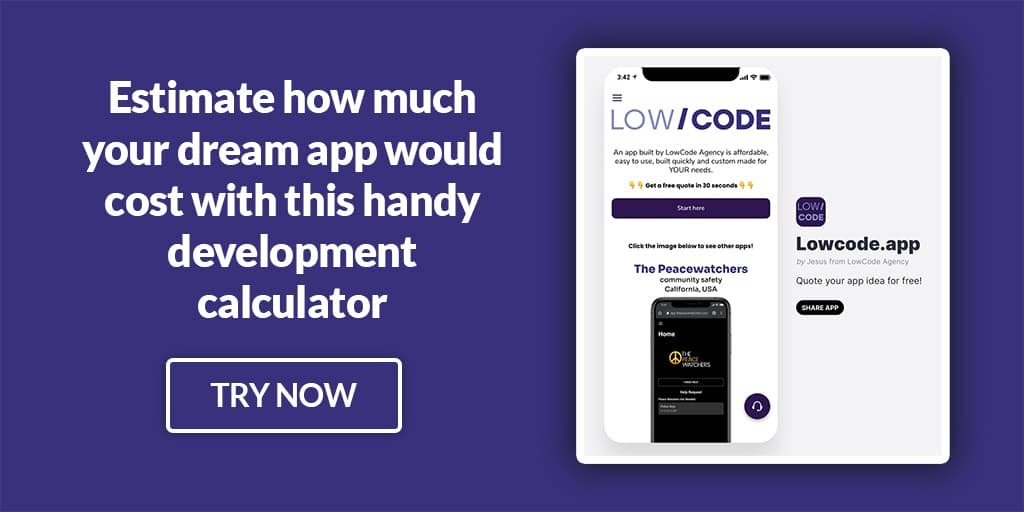
Frequently Asked Questions
No-code development is important because it allows for lower costs compared to traditional development as well as faster shipping times, allowing for adjustments in case an app doesn’t fit exactly the requirements of your business or some features need tweaking over time.
Yes. Although no-code tools have improved a lot, they’re made with code, and the underlying functionality is all made possible because of code. Code will always be relevant but, depending on the use case, using no-code platforms may be the best use of resources for a business.
No. Just like WordPress didn’t replace web designers, low/no-code won’t replace developers, it will simply shift their workload from front-end work to primarily backend work. This is better for everybody as people on the front end become more technologically independent.
Both low- and no-code are technological advancements that have caught up to their best implementations only in recent years. Traditionally, low-code interfaces were extremely clunky and hard to use, making the experience almost impossible to endure for an end-user. Today, it’s the opposite.

Jesus is the founder of Low Code Agency: a low-code development agency that allows small business owners to get their mobile and web apps done fast and cost-effectively while maintaining quality.


